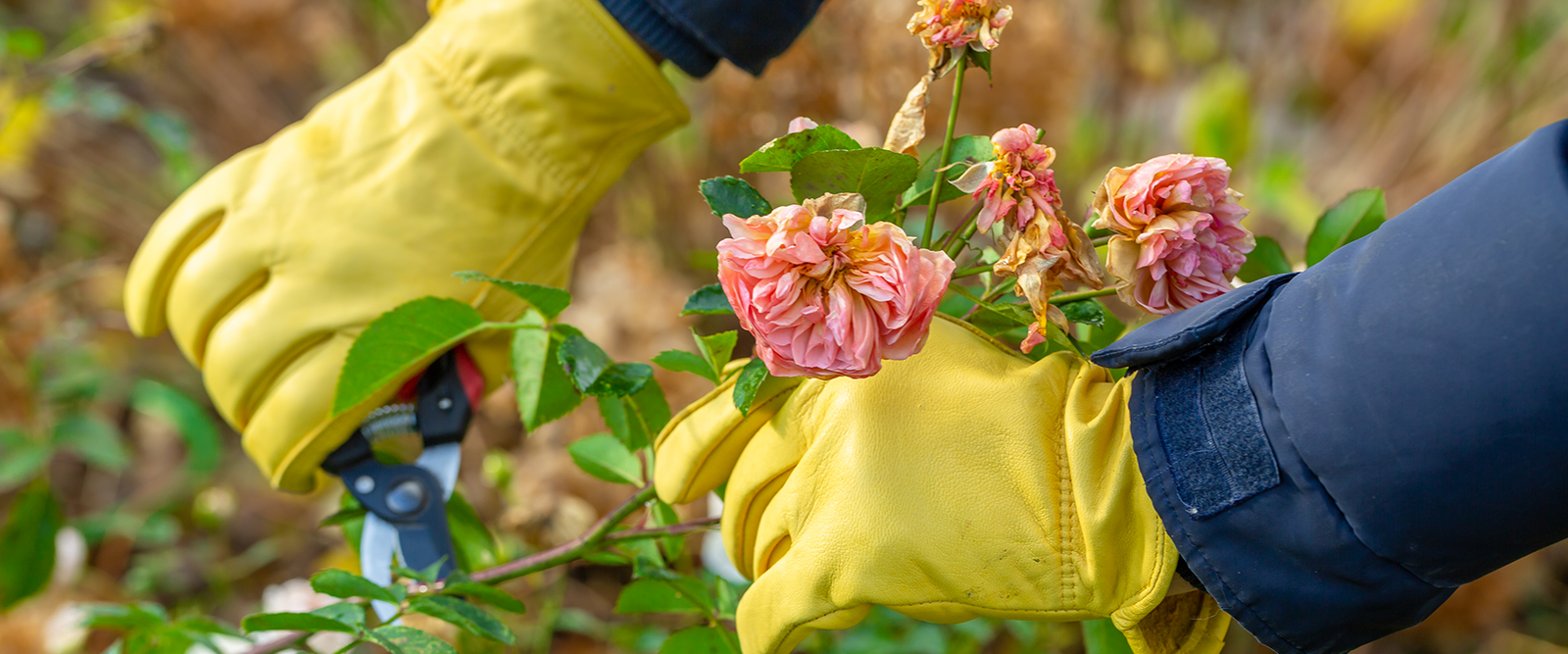Deadheading involves removing old dried flowers to keep your rose bushes neat and attractive. It's not just about appearance – it helps the rose bush focus on new growth instead of wasting energy on dying flowers or developing seeds. Deadheading promotes new blooms and maintains the health of your rose bushes.
Here are easy and effective steps for deadheading:
1. Prepare Your Tools
Make sure you have quality pruners, like our PrecisionPRO bypass pruning shears, for precise cuts, and wear gardening gloves to protect your hands from thorns.
2. Identify Areas to Deadhead
Look for spent roses, blooms crossing paths, intertwining, or rose shoots growing inward.
3. Locate the Bud Eye or Swollen Area
This is where a new shoot will form, just above the joint of the leaf-set and the shoot. Make your cut about ¼ inch (6 mm) above the bud eye.

4. Position and Make the Cut
Position pruners at a 45-degree angle for water runoff, preventing bacteria or fungi growth.
5. Apply White Glue
Seal the freshly cut shoot with white glue to reduce the risk of disease.
6. Clean Your Garden Tool
After deadheading, thoroughly clean your pruning shears or any tools used to prevent disease transfer between plants.
Deadheading not only enhances the visual appeal of rose bushes but is crucial for plant health. By removing spent blossoms, the plant redirects nutrients, promotes new growth, and reduces hiding places for insects and pests. This process also lowers the risk of fungal diseases, allowing you to enjoy your roses while spending therapeutic time caring for them.




